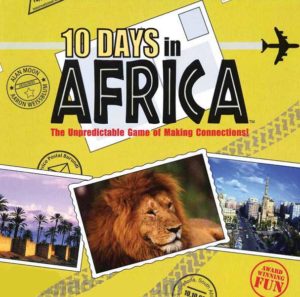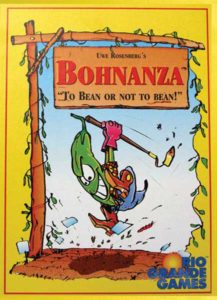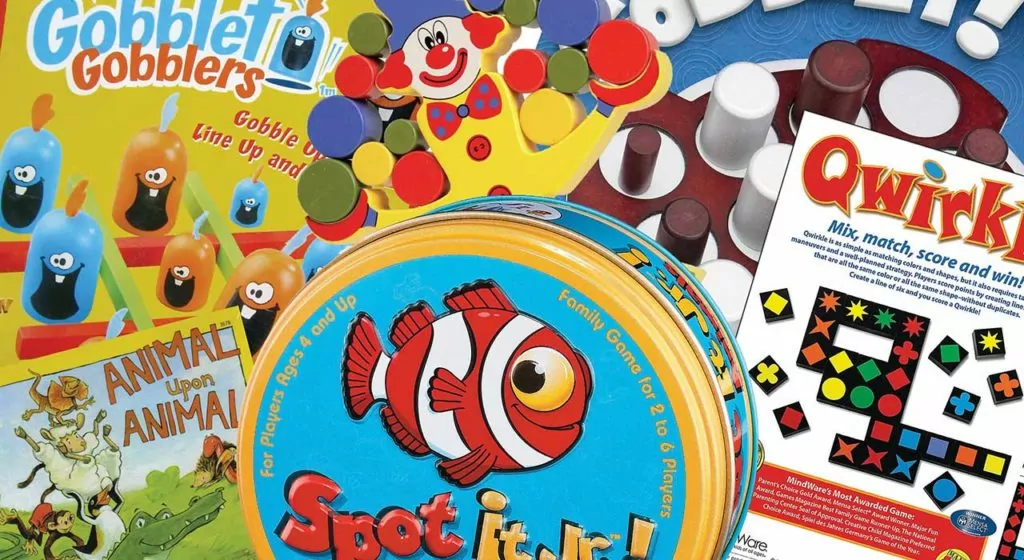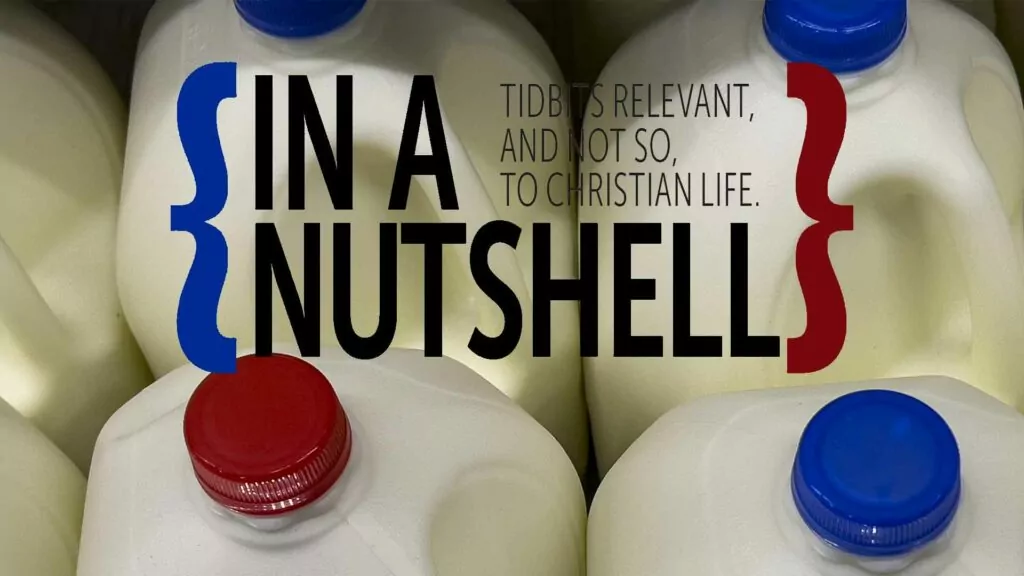When it comes to traditional board games the joke about bored games holds a certain amount of truth. Everyone knows that Risk is usually won by the person lucky enough to get property in Australia, or that in the original Trivial Pursuit your best guess is always either Shirley Temple or Gary Cooper. And either games are entirely luck driven (think Chutes and Ladders) or else they favor those who have turned a pastime into a course of study – the professional Scrabble or bridge players, the chess masters, or those malodorous individuals known as war-gamers. It’s sometimes hard to believe that in the old days games – especially those with dice or cards – were often taboo, as they might lead to gambling and other vices.
So in this article I’d like to diverge from my usual focus (literature) and write something about the value of board games. Of course, not everyone likes games – and that’s perfectly fine – but I think often we’re not aware what a positive form of entertainment board games can offer. In addition, many are simply not aware that there are different and more interesting games out there then what they’ve grown up with, or what they might see on the shelves in Wal-Mart.
NEW GAMES ON THE BLOCK
In 1995, a German game designer called Klaus Teuber came out with a board game called The Settlers of Catan. The game has sold over 18 million copies and was revolutionary in making specialty games popular in North America. You see, specialized games with unique themes, interesting mechanisms, and deeper strategy had always been more popular in Europe, and especially in Germany. As hockey is to Canada, or chocolate to Belgium, so board games have long been an intrinsic part of German culture. The Settlers of Catan succeeded because it was a kind of cross-over game, mixing luck and strategy brilliantly. It had enough complexity to lend itself to repeated plays, yet not too much to be off-putting to newcomers.
Yet while Settlers was successful, twenty years later it’s still only the occasional specialty game that breaks through to the mass market. For instance, my local Chapters bookstore has recently started to stock rare games like Agricola (a complex game about farming set in the 17th century) and Pandemic (a game where players work together to save the world from the outbreak of an epidemic). To most these remain esoteric curiosities, and people seem happy to buy the odd TV-show trivia game which gets played once and then collects dust. The result is that finding good quality games is almost a game in itself: you have to know where to look. So further on in this article you’ll find some practical advice to help you along.
THE USES OF BOARD GAMES
Last year I came across an interesting little game called Ten Days in Africa. It’s basically a Racko variant, but with a much more interesting theme. The idea is that you collect cards that represent either a country in Africa or a plane or car. Your job is to chart a 10-day journey by having the cards in a correct order.

The game is not incredibly strategic, but what I found remarkable is how well it teaches geography. After playing it a few times I once more had all the countries memorized along with not a few of the capitals (it’s especially fun to say “Ouagadougou”). Even my six-year old daughter quickly learned the rules and could recite many of the countries off by heart. It strikes me that this is exactly the type of game that should be a staple in the classroom. It makes learning fun, and allows the mind to retain information at a deeper level than rote learning often does.
Aside from the educational benefits of board games (many more of which could be used in the classroom), here are some other positive aspects (this is by no means an exhaustive list):
1. Board games support social interaction
They create memories, induce laughter, and simply allow families and friends to enjoy being together. In addition, board games are great for breaking the ice with newcomers, strangers, or people of different ages. For example, I know of a minister who frequently uses board games with his pre-confession students (after the lessons of course!) as a way to get to know them more personally.
2. Board games are cross-generational
Games make it easy to get people of different ages around the same table. This can be especially true in the teenage years, when children feel this strange need to dissociate themselves from their elders. The only people who are not allowed to play games are those past the age of 99.
3. Games help teach manners
Losing graciously is one of the hardest lessons to learn, and not only for young ones. Board games teach courtesy, patience (esp. if the turns are long), cooperation, and so forth.
4. Games develop mental skills
For younger kids they are great for teaching simple addition and subtraction. In addition, they help children develop better attention spans. For adults they teach problem solving, among other things.
There have also been an increasing number of studies that suggest that as we get older it’s important not only to keep our bodies fit, but also to challenge our brains. Puzzles like Sudoku are often used as examples of brain games that can help prevent Alzheimer’s, but the same can be said for anything that taxes our mental faculties.
5. Games provide a healthy outlet for competition
This is also where specialty games provide more variety than traditional North American fare. In Monopoly, for instance, you thrive when others land on your properties and go bankrupt (it really is a rather grim depiction of capitalism!). By contrast, specialty games frequent include catch-up mechanisms that allow players who have fallen behind in the scoring to get back into it. Monopoly only provides Free Parking and an occasional lucky dice roll. In addition, specialty games include an entire subgenre of games where players work together to succeed. I’ve mentioned Pandemic as an example of a cooperative game. Another in the genre is Shadows over Camelot, where players work together as the Knights of the Round Table. However, there is a twist: one of them may be a traitor, plotting against them…
6. Games are a relatively cheap form of entertainment
I own some games that I’ve played over 50 times. When you think of how much a round of golf costs, or a nice dinner, board games are really not that expensive.
SOME GENERAL ADVICE
I’ve played a lot of different games over the years, so let me share a few tips for making your board game experience more enjoyable:
- Never read through the rules of a new game together. This is one of the most tedious things you can do. Instead have someone read through the rules carefully and then explain the game to the rest of you. In general, it takes much longer to read rule sets then to explain them orally.
- Don’t be afraid of a challenging game. I’ve met many people who don’t like it when a game has more than two rules: roll your dice, move your piece. Games are supposed to be a form of recreation, they say, not an IQ test. True enough – but these same individuals have no problem mastering equally complex hobbies.
- Take pleasure in seeing others do well.
- Know who you’re playing with. There are some games that allow for a great deal of cutthroat behavior – if you play with newcomers or relatively inexperienced gamers, you may want to pick out a friendlier game.
- Don’t force anyone to play against their will.
- Never trust your spouse in a board game.
AVAILABILITY
As mentioned, your average Wal-Mart has a fairly small selection of board games, most of them geared towards small children. Even the fact that they’re usually stocked among the rest of the kids’ toys suggests that there’s nothing here for adults. If you want to find more than Battleship or Candyland you’ll need to either go to a specialty store (those are hard to find and often expensive), or go online. To that end, let me direct you to a few websites to help you out. Please note that I’m not personally affiliated with any of the stores listed, but I know that these are very reputable companies with great customer service.
One of the biggest is BoardGameGeek. Don’t let the name of this site put you off! This massive, sprawling site has millions of users, and is the largest database of board games in the world. You can search for games by theme, mechanics, publisher, etc. In addition, you can read reviews, have your rules questions answered, and much more. It may take you a bit to navigate the site, but it’s well worth the effort.
For Canadians, Great Boardgames is probably the best online store in terms of selection, price, and ease of use.
If you’re just interested in finding better games for children, in general, one of the best game companies for children’s games (esp. the very young ones) is called HABA (they also make other high quality children’s toys).
RECOMMENDATIONS
Part of the difficulty with buying specialty games is that you often cannot try them out before you buy. So here are some games I highly recommend. I’ve tried to represent a range of interests, themes, mechanics, and ages.
FITS
This is basically Tetris the board game, but everyone I’ve played it with has loved it, and many have bought their own copies.
Pandemic
In this great example of a cooperative game, you must try to save the world from the outbreak of an epidemic. Can you beat the game?
Agricola
If you think The Farming Game is complex, try again. This is one of the best strategy games out there. The title is Latin for “farmer” and you get to build up a farm that looks nicer than those of your neighbors. The game can be played on two levels of difficulty, and the easier “family” version can be played from 7 or 8 years and up.
Memoir ’44
This World War II simulation is a two-player game that is not just for boys who like to play with army toys. You can watch a video demonstration of how the game is played at www.daysofwonder.com/memoir44.
Zooloretto
Build your own zoo and attract tourists to come see the animals! Zooloretto is a well-produced game that is especially geared towards families.
Dominion
This is one of the strangest and most addictive card games you’ll come across. It has a medieval theme that may not be for everyone, but every game is both different and highly competitive.
Bohnanza
This quirky little card game lets you collect income for planting bean fields! It’s easy to learn and quick to play. If you’re tired of your old camping favorites, try this one out.
Ticket to Ride: Europe
This family-oriented train game is a great game to start with if you’re unfamiliar with specialty games. Our copy has been played so often we’ve had to replace the cards! You can watch a video demonstration of the game here.
Animal upon Animal
Made by HABA, this game is like Jenga in reverse. Players have various animals that they have to try place on the back of a crocodile. This one is great for very young ages (and it teaches dexterity), but will also produce laughs in adults.
Ten Days in Africa
If you’re an educator, check out this series. It’s great for teaching geography as there are also versions for the USA, Asia and Europe.
CONCLUSION
Let me end on a slightly more theoretical note. The Dutch historian Johan Huizinga once wrote an intriguing book called Homo Ludens: The Play Element in Culture (1944). In it, Huizinga asks whether all culture is not ultimately a form of play or playfulness, and whether we should speak of Homo Ludens (Man the Player) rather than of Homo Sapiens or Homo Faber. From ceremony to ritual to storytelling – culture is about stepping out of our ordinary lives and participating in an act of imaginative creation.
Of course, this argument can become reductive, for it suggests (as such anthropological perspectives often do) that even something like religion is a form of play. Yet Huizinga is right in demonstrating that play is not something confined to children, something to be outgrown. At the very least it is an intrinsic aspect of culture, and as such it’s nothing to be ashamed of. Reformed Christians sometimes have an antipathy towards that which seems escapist or fantastical. But our imagination is an important faculty in its own right and not something to be repressed. Thus hobbies and pastimes are not things we do when we’re not busy being serious with kingdom work, but are a natural product of Christian culture.
This article first appeared in the June 2010 issue.












